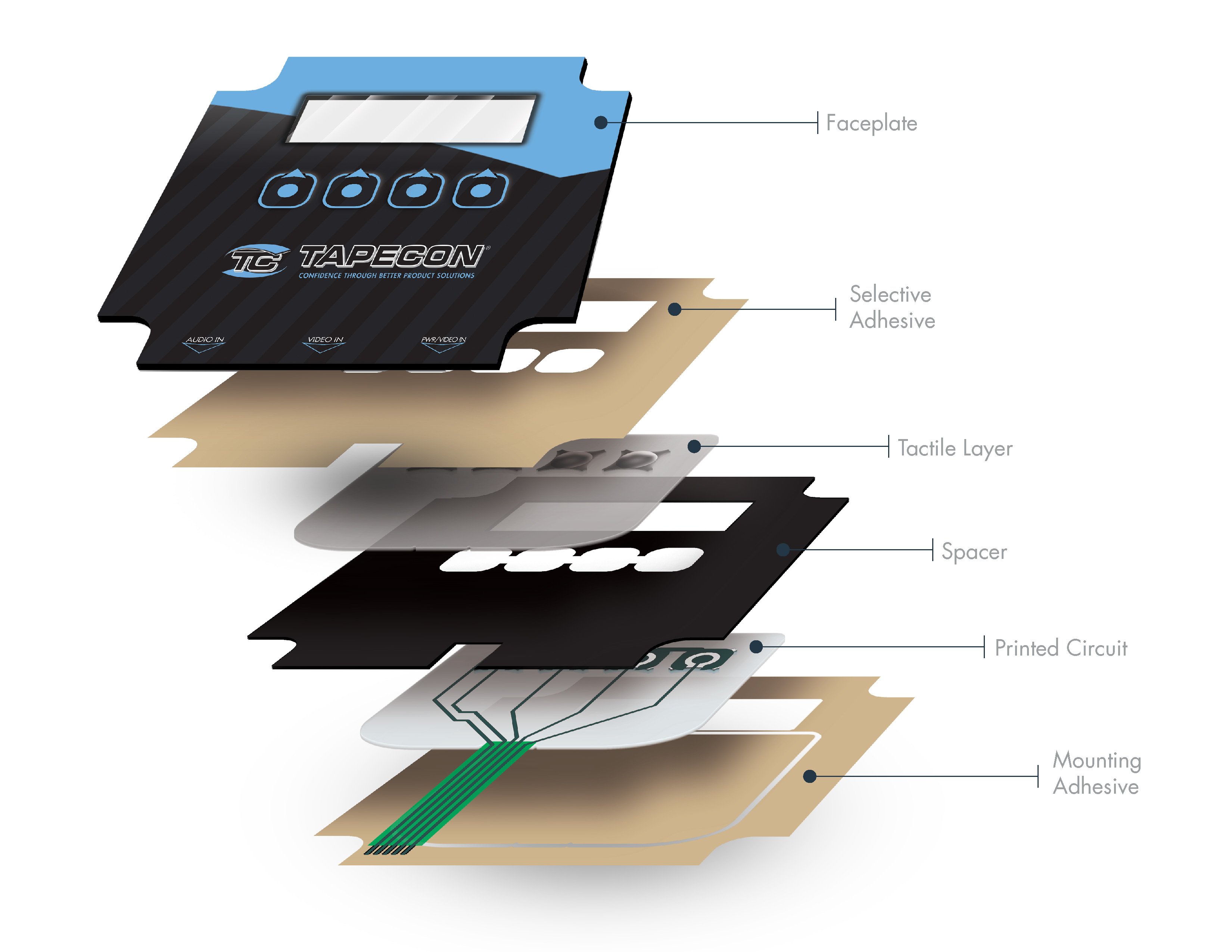Just How a Membrane Switch Boosts Customer Experience and Tool Performance
Just How a Membrane Switch Boosts Customer Experience and Tool Performance
Blog Article
Comprehending the Performance of Membrane Switches for Interface Devices
The capability of membrane switches over represents a substantial development in individual interface layout, integrating performance with aesthetic adaptability. As sectors increasingly prioritize customer experience, understanding the nuances of membrane layer button technology ends up being essential.
What Are Membrane Layer Buttons?
Membrane layer switches are cutting-edge user interface tools that assist in individual interaction with electronic devices. These flexible parts contain several layers, including a graphic overlay, spacer, and a published circuit layer. The layout enables a smooth integration into different digital tools, boosting both the visual and useful aspects of interface.
Membrane layer buttons are typically employed in a large range of applications, from home appliances to industrial equipment and medical devices. Their building and construction usually features a thin account, making them a suitable option for small designs. The tactile responses given by these buttons can be crafted to meet specific individual preferences, ensuring effective interaction between the user and the gadget.
Resilience is an additional considerable benefit of membrane buttons, as they are resistant to dust, wetness, and chemicals, which enhances their life-span in requiring settings. In addition, these buttons can be personalized in terms of form, size, and graphic design, enabling branding and user-specific functions. In general, membrane changes represent a sensible option for enhancing customer experience in electronic tools, integrating functionality with visual appeal in a reliable way.
Exactly How Membrane Layer Switches Work
Operating on a simple principle, membrane layer switches over use a split building and construction to register individual input effectively. Each button consists of numerous layers, including a printed circuit layer, a spacer layer, and a leading graphic layer, which are made to collaborate seamlessly. When a customer presses the top layer, it compresses the spacer layer, bringing the conductive components of the circuit layer into call with each other.
This get in touch with develops a closed circuit, indicating the tool to implement a details function. The style permits different configurations, consisting of responsive feedback, which can improve the customer experience by providing a physical sensation upon activation. The materials used in membrane switches commonly consist of flexible substrates, such as polyester or polycarbonate, which make sure resilience and durability versus wear and tear.

Key Benefits of Membrane Layer Switches

One more significant benefit is their compactness. Membrane layer switches are slim and lightweight, which enables makers go to website to save room in their gadgets without sacrificing performance. This attribute is especially advantageous in applications where weight and quantity are important factors to consider.
Additionally, membrane layer buttons are resistant to dust, dampness, and chemicals, enhancing their durability. This durability extends their life expectancy and reduces the requirement for constant replacements, causing cost financial savings gradually.
Moreover, the tactile responses given by membrane buttons can be optimized to improve customer interaction. They can include attributes such as raised switches or distinct clicks, improving functionality and customer experience.
Applications Across Industries
Individual user interface devices making use of membrane buttons prevail in a broad selection of industries, showcasing their versatility and capability. Membrane Switch. In the clinical industry, membrane switches are important to tools such as diagnostic equipment and individual monitoring systems, where their sturdiness and ease of cleaning are vital for keeping hygiene standards. Similarly, in the automobile market, these switches are employed in control panel controls and infomercial systems, providing a sleek and contemporary interface for individuals.
Additionally, the find out this here consumer electronics industry take advantage of membrane layer switches in appliances and portable tools, where small design and easy to use interfaces improve individual experience. Industrial applications likewise take advantage of membrane changes for control panels in machinery and automation systems, stressing their effectiveness and resistance to rough settings.
In the aerospace and defense industries, membrane buttons are used in cockpit controls and equipment, where integrity and efficiency under extreme conditions are critical. Additionally, the pc gaming sector progressively incorporates membrane layer switches in controllers and gallery makers, adding to an engaging user experience. Generally, the adaptability of membrane switches over enables their prevalent use throughout many sectors, highlighting their importance in modern-day interface layout.
Future Patterns in Membrane Layer Change Technology

In addition, making use of sophisticated products, such as polycarbonate and polyester movies, is expected to rise, offering boosted resilience and resistance to environmental stressors. These products add to the total longevity of membrane switches, making them appropriate for harsher commercial applications.
Moreover, the incorporation of wise innovation, consisting of IoT connection, will certainly enable membrane buttons to interact with various other tools and systems, helping with a much more interactive individual experience. This pattern lines up with the expanding need for clever tools across different industries, from health care to customer electronics.
Finally, customization options are expected to expand, permitting producers to develop bespoke solutions tailored to details user requirements and choices. These developments will place membrane layer buttons as essential parts in the evolution of interface technology.
Conclusion
In final thought, membrane switches over represent an essential advancement in individual interface technology, using a reliable and flexible remedy for diverse digital applications. As advancements in material scientific research and touch sensing innovations proceed, the functionality and applicability of membrane buttons are anticipated to expand, strengthening their relevance in modern-day electronic gadgets.
Report this page